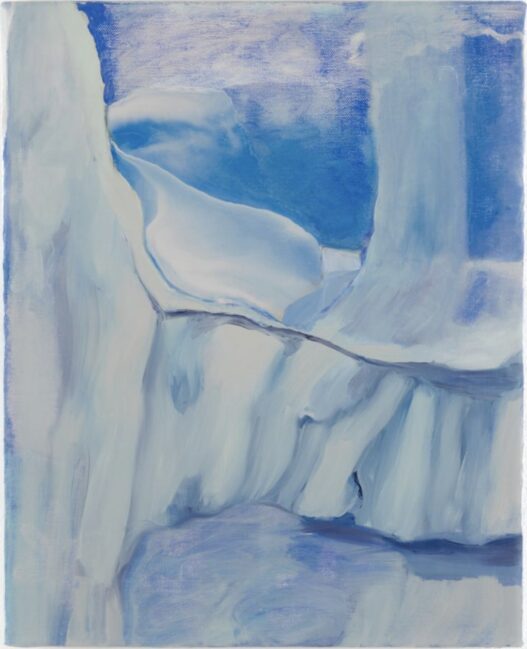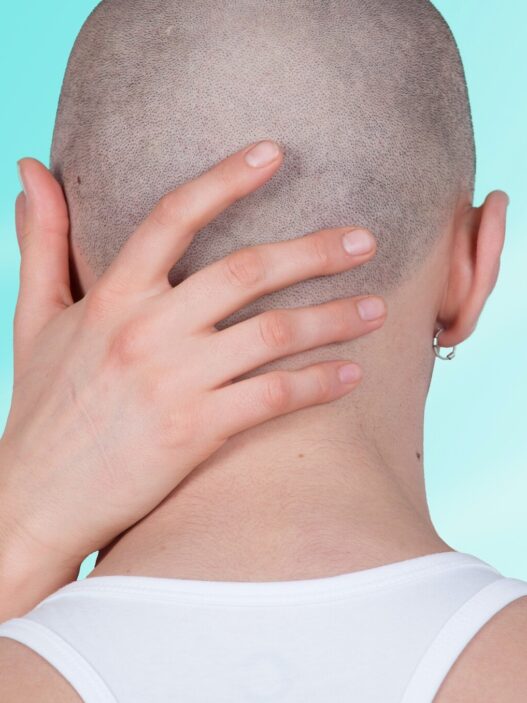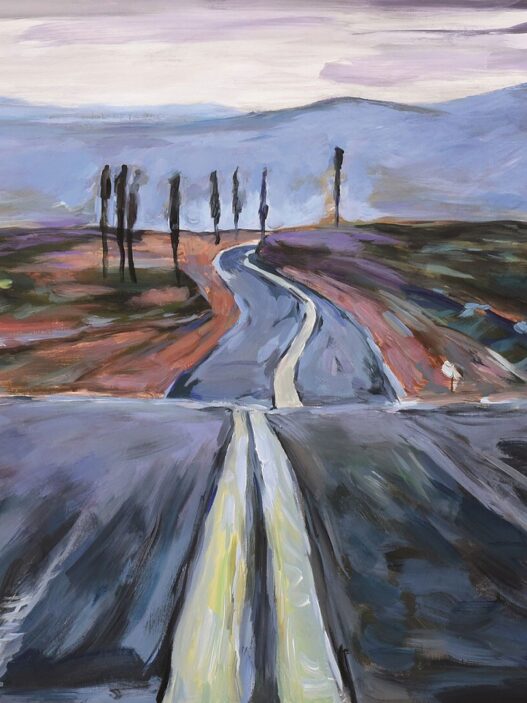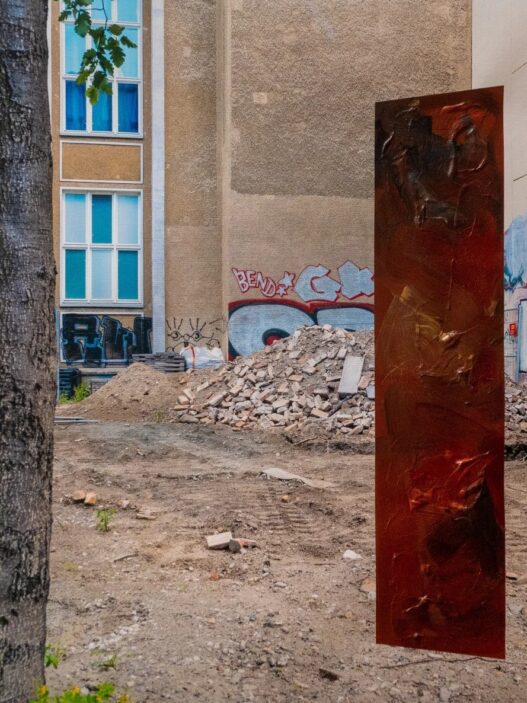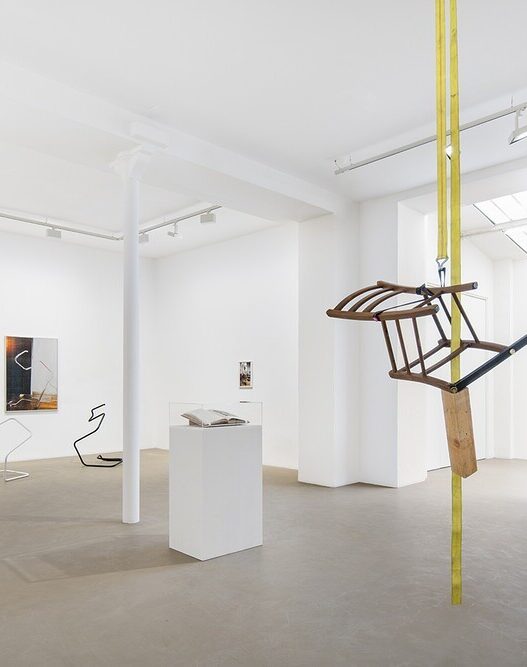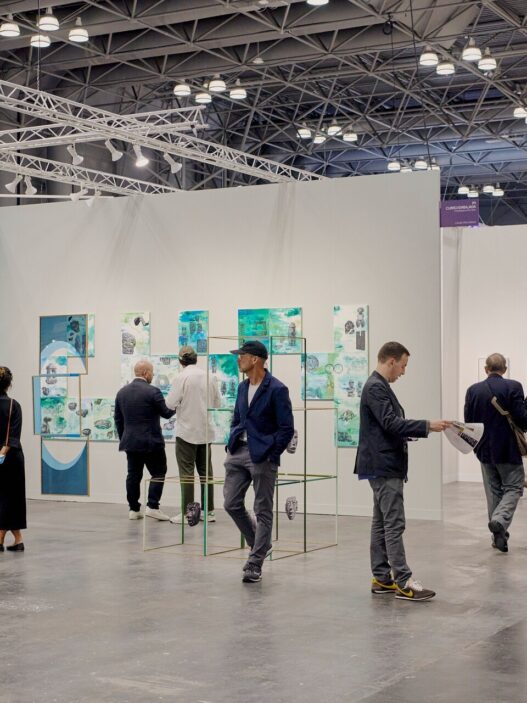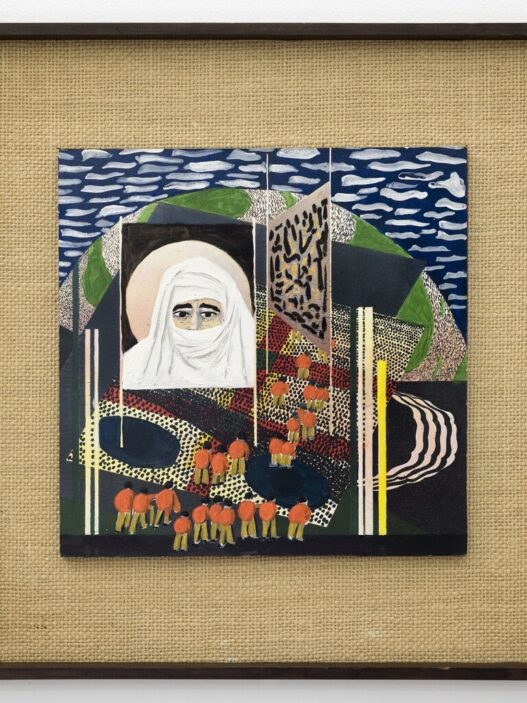The Approach presents two exhibitons: John Maclean: The Annexe and group exhibition The sun rises under the pillar of your tongue from January 14, 2023 to February 18, 2023.
The sun rises under the pillar of your tongue
Rinella Alfonso, Lynda Benglis, Enzo Cucchi, Rezi van Lankveld, Alina Szapocznikow, and Erika Verzutti featured in the group show The sun rises under the pillar of your tongue. The exhibition addresses the poetics of form and the inextricable entanglement of body and memory by combining painting and sculpture. Rezi van Lankveld and Emma Robertson chose the artists in the show to explore an instinctive and visceral interaction between painting and sculpture, fluctuating between abstraction, figuration, and symbolism.
Rinella Alfonso’s paintings place elements from everyday life in wholly unique and often stark fantasy worlds. She is frequently inspired by memories of her childhood home in Curaçao. Her most recent pieces include traces of a bra, piercings, a golden tooth, and a hairy couch, all of which are strongly ingrained in her culture. Alfonso creates lyrical, abstract passageways between memory and fiction through painting formal frameworks, creating new realities that speak in an imaginative and transformative language.
Lynda Benglis rose to prominence in the late 1960s with her poured latex and foam pieces. With the rise of Process Art and Minimalism, Benglis’ work provided a well timed rebuttal to the male-dominated fusion of painting and sculpture. She is well-known for her exploration of metaphorical and biomorphic shapes, and she is deeply concerned with the physicality of form and how it affects the viewer, employing a variety of materials to render dynamic impressions of mass and surface: soft becomes hard, hard becomes soft, and gestures are frozen.
In the late 1970s, Enzo Cucchi emerged as a key actor in the Transavanguardia movement, a term developed by critic Achille Bonito Oliva to describe the reintroduction of figuration into painting and sculpture in response to minimalism and conceptual rigour. Cucchi’s installations are built of a variety of materials, with the image – whether painted, sculpted, or drawn – always taking center stage. Painting, sculpture, and sketching, for Cucchi, are the tools by which he externalizes his own inner reality, a direct route to his subconscious; his images belong to a poetic universe that frequently allude to the ordinary world and its culture.
Rezi van Lankveld is noted for her paintings that focus on the process of depiction, both its absence and presence. Her paintings find their moments of completeness when her investigation of paint accumulates sufficiently to sustain figuration, thanks to her individual method focused on improvisation. Imagery is evoked as much as it is signified, with the process of creating not simply subject but also content. Van Lankveld’s art has developed on an insistently small scale. Consistency exists in shifting palettes, as if decades of practice were one continuous effort.
Alina Szapocznikow, a sculptor who began working in a classical figurative style in the postwar period, drastically reconceived sculpture as an imprint not only of memory but also of her own body. Though her career lasted less than two decades (it was cut short by the artist’s early death in 1973 at the age of 47), Szapocznikow left a legacy of startling objects that reference Surrealism, Nouveau Réalisme, and Pop art. Her tinted polyester casts of body parts, which were frequently transformed into everyday objects such as lamps or ashtrays; her poured polyurethane forms; and her intricately constructed sculptures, which at times incorporated photographs, clothing, or car parts, are all as wonderfully idiosyncratic and culturally resonant today as they were when they were first created.
Erika Verzutti‘s sculptures are sensuous and tactile, appearing to exist beyond of time and space, conjuring relics or archaeological artifacts. They are made of bronze, concrete, and papier mâché and draw inspiration from a variety of sources, including vegetables and household objects, as well as newspaper clippings and photos acquired online. They take a whimsically omnivorous approach to art history, referencing and reworking works ranging from Brancusi to Brazilian modernity, or from Picasso to the Paleolithic.
John Maclean – The Annexe
The Approach features Scottish artist John Maclean’s first solo exhibition in the UK.
Maclean’s imagery is derived from salvaged, hand-tinted postcards or online print-outs, with a focus on landscape and quiet outdoor themes. He emphasizes on an ordinarily peripheral landmark, such as a tree, home, waterfall, or mountain, editing off the rest of the image and improving the registration of the photographs (sometimes impacted by deterioration) with new rich and exaggerated hues. Maclean’s modestly sized paintings on board are created through a repeating process of application, rubbing down, and re-painting, resulting in a palimpsestic surface where the preceding layers are just conspicuously visible.
Despite their diminutive size, these paintings inspire concepts of a greater narrative in which we, the observer, only see a single scene from a much wider storyline. With its story-telling elements, Maclean’s approach to painting is difficult not to compare to his other artistic pursuits of writing and directing films. However, in a recent interview with Matthew Higgs, he also pointed out what he enjoys most about the particularities and differences between the two practices: “painting is most like writing – in terms of its relationship to filmmaking. You need time to think and to experiment. It is essentially a lonely pursuit. Much of one’s time is spent on research, on dreaming, on false starts and minor breakthroughs. When it comes to actually shooting a film, it’s probably as far from painting as can be; making a film is all collaboration, a form of improvised madness, watching the clock, and shifting with the external circumstances. I love this social and chaotic aspect of filmmaking precisely because it’s the opposite of painting.”
John Maclean (b. Perth, Scotland 1972) lives and works in London, England. He studied at Edinburgh College of Art, Scotland (1990-1994) and the Royal College of Art (1994-1996). Following Maclean’s time studying at The RCA he became a founding member of the influential group The Beta Band (1996-2005); contributing keyboards and eclectic use of layered sampled sounds along with idiosyncratic music videos and live performance film backdrops. In 2009 Maclean directed his first short film ‘Man on a Motorcycle’ starring Michael Fassbender. His feature film ‘Slow West’ was released to wide critical acclaim in 2015. After a long hiatus Maclean returned to painting during the pandemic and started to post images of the resulting works to his Instagram account. The paintings were noticed by White Columns director Matthew Higgs and Maclean was subsequently offered his first solo show which took place at White Columns in New York in March 2022.









